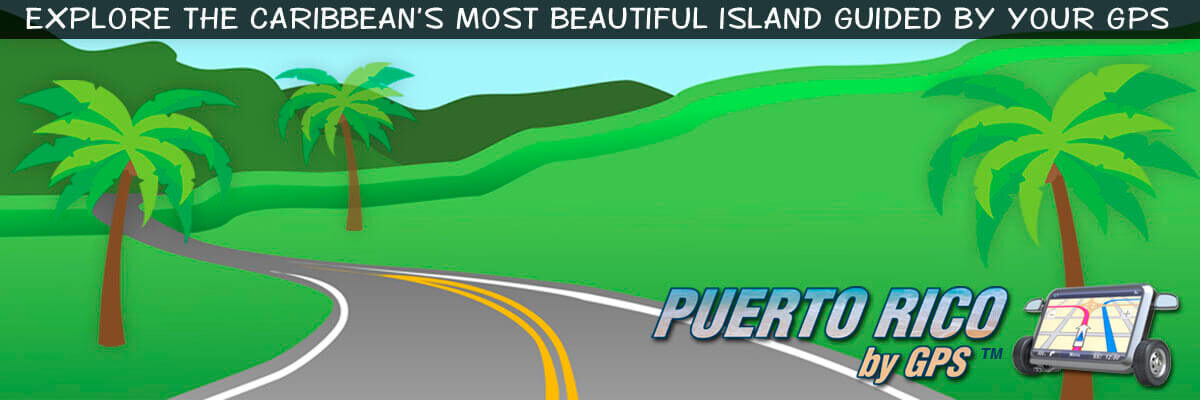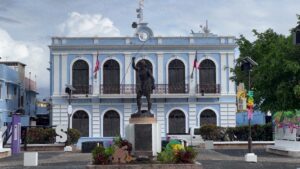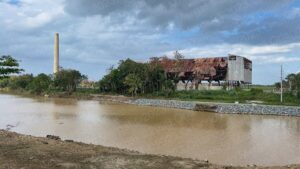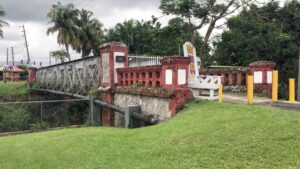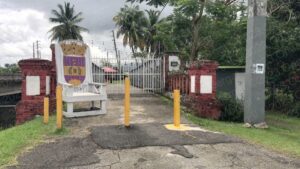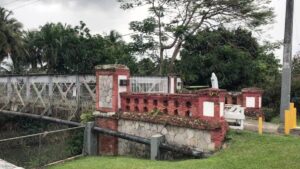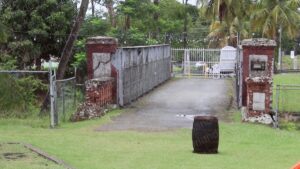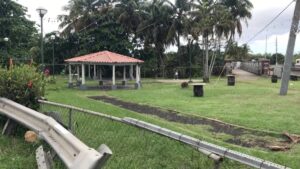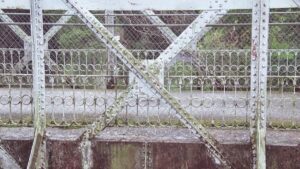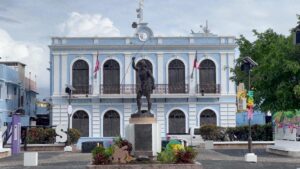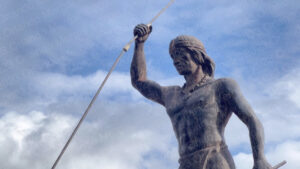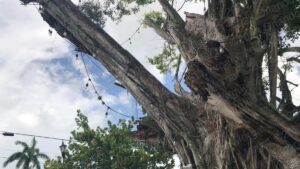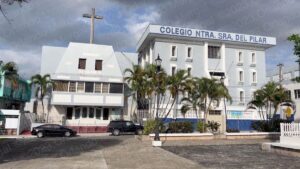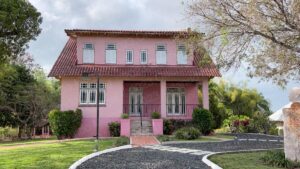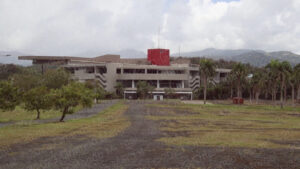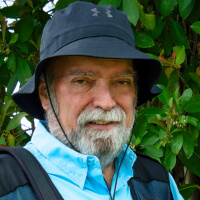At Puerto Rico By GPS we started 2023 on a mission: “to visit all 78 municipalities in Puerto Rico (one every two weeks). The objective was to produce a video about each one and at least one blog post. In many cases we’ve written more than one. At that rate it should take us a little over 37 months to complete our goal. We’ll also end up with a mountain of information, thousands of pictures and footage covering every corner of the Island. This time it was Canóvanas’ turn and we spent two whole days there to bring you a picture as complete and honest as possible.
There are two ways to do what we do. You can go at it on your own and Google your way through, or you can contact each municipality hoping they’ll assign someone to show you around. We’ve tried the later and ended up doing the former. Why, because most townships don’t seem to care for international tourists.
They figure that it’s much easier to attract people from other towns. They even have a name for this behavior. They call it “turismo interno” (internal tourism). But sadly, it’s a zero-sum game when it comes to the Island as a whole.
Our original plan was (and still is) to circle San Juan, once and again until we cover the larger Island. Then we’ll visit the island municipalities of Vieques and Culebra. Finally, we’ll return to San Juan.
Why? Because San Juan is where we started, and we have a lot more coverage of San Juan than of the rest of the Island.
The first cicle included the towns of Carolina, Trujillo Alto, Gurabo, Cagues, Aguas Buenas, Bayamón, and Cataño. We left Guaynabo out because we weren’t able to contact anyone at City Hall and most of their attractions were closed. You can tell which municipalities were the most accomodating because they were the ones to get the most coverage.
Now we’re on the second circle and once again we attempted to contact each and every one of the municipalities. The results were dismal. No one answered. So, from now on we’re going to do what regular tourists do. We’re going to visit on our own and voice our honest opinion, good or bad.

Canóvanas is the second youngest municipality in Puerto Rico (clcik on image to see it larger)
The first town in the second circle was Loíza, a smaller poorer municipality that’s mostly about beaches, local cuisine and folklore. Loíza is a beautiful area where the beaches mainly cater to the locals. You can catch our coverage about this wonderful town in our previous post.
This week we’re going to tell you a little bit about Canóvanas, a larger municipality to the south that was actually part of Loíza for almost 300 years until it was split apart back in 1969. That’s right!!! Canóvanas is the second youngest municipality in Puerto Rico.
The “Cliff Notes” History of Canóvanas
Canóvanas was originally a part of Loíza. We’ve already established that. But what we haven’t said is that Loíza was a huge municipality, that extended from the northern coast of the Island all the way to Juncos and Las Piedras to the south, Río Grande to the east and Carolina to the west. In fact, I would argue that it was almost the size of Carolina; maybe even larger.
Loíza was settled by members of the Yoruba tribe that were brought to Puerto Rico from Africa to serve as slaves back in 1692. However, it was formally declared a town by the Spanish government in 1719.
Believe me, I don’t mean to give this post racial overtones, but the fact of the matter is that the Spaniards brought black slaves to Puerto Rico after they disseminated the Taíno population. Those slaves settled mostly in the coastal towns, while the white folks settled mostly in the mountainous regions.
Don’t believe me? Look around you. There are still towns in the center of Puerto Rico where black people are rare. That’s not racism. It’s plain demographics.
Back in 2010, according to the U.S. Census, 64.3% of the “loiceños” were black, while only 26.5% were white. I would venture to guess that most of those white folks lived in the southern part of the municipality, near the county lines with Las Piedras and Juncos.
And there was another situation. Things weren’t going too well on the Island after the U.S. invasion. The new colonial power devaluated the Puerto Rican peso by 50% sending most of the criollo land owners straight into bankruptcy. So in 1902 the Island’s Legislative Assembly approved a law for the consolidation of certain municipalities. As a result, Loíza (including what is known today as Canóvanas) was incorporated into the neighboring municipality of Río Grande.
Two years later, in 1905, the law was revoked and everything returned to the way it was before. In 1909 the entire administration of Loíza was moved to modern day Canóvanas. Why? Because it had a better location and the area was doing better economically.
Somewhere along the way Puerto Ricans started calling the original town “Loíza Aldea”, a negative moniker that didn’t sit well with the people of Loíza. After all, the word “aldea” means “village”; and a poor one at that.
Finally, on June 30th, 1969, then governor Luis A. Ferré signed the law that converted Canóvanas into a full-blown municipality. That made it the second youngest municipality on the Island (Florida, on the northwest coast was established in 1971).
It also turned Loíza into a poor municipality, mostly residential in nature, with hardly any industry or business sectors to this day.
Canóvanas as a tourist destination.
Canóvanas is one of those towns that you mostly pass through on your way to somewhere else. This isn’t to say that it doesn’t have possibilities. It’s just that at this point in time they haven’t been realized. Let me give you a couple of examples.
The Old Canóvanas Sugar Mill
Most Puerto Ricans have mixed feelings when it comes to the sugar cane era. When the U.S. took over the Island back in 1898 Puerto Rico had a diverse agriculture. During the 18th and 19th centuries Spain promoted an export-based agrarian economy, centering on the production of sugarcane, coffee, tobacco and other smaller scale products. That said, few —if any— funds were ever allocated to improve the island’s infrastructure (roads, railroads, ports) or social conditions. That’s the truth. It wasn’t peaches and cream like some pseudo historians would want to have you believe.
When the U.S. took over things got worse; at least at the beginning. The new rulers devaluated the Puerto Rican peso by 50%, which in turn sent most local businessmen into a tailspin. The economy went from a somewhat diverse model (to be fair) to one centered on sugar cane production. This was the case during most of the first half of the 20th century.
In many cases sugar mills wouldn’t even pay their workers with real money. Instead, they used vouchers that the workers could only use at the sugar mill’s store. And —of course— everything there was scarce and overpriced. The entire operation was one of exploitation and subsistence. All this changed during the second half of the 20th century, as Puerto Ricans reached higher levels of education and entered an economy based on manufacturing and high technology.
So, as you can imagine, the sugar cane era doesn’t bring back the best of memories.
But hey, it happened and you can’t ignore history or change it. So why not turn that old dilapidated structure into a giant museum, where visitors could learn about every aspect of this bygone era and even try some “guarapo de caña”. Maybe even some raw sugar cane?
Don’t know what “guarapo” is? It’s the raw juice of the sugar cane that’s extracted by crushing it. It’s pure sugar like God made it!!! On the other hand, if you’re a diabetic, stay away, because it could send you straight to the ICU.
The “Villarán” Bridge.
A bridge is a bridge, is a bridge, is a bridge. Right? Wrong!!!
The Villarán Bridge is a truss bridge, that was imported from Europe and installed in the town of Loíza in 1892, on the old road that used to connect the old town of Río Piedras with the neighboring town of Río Grande. Remember, Canóvanas didn’t exists in 1892.
And why is it so important, you might ask? Well, it’s the best-preserved example of an Eiffel pony truss bridge in Puerto Rico and the United States. That’s Eiffel, like the guy that built the tower in Paris!!! Yeah, that guy.
Eiffel was a fan of truss structures. So much so, that if you look carefully at the bridge in Canóvanas and compare it to the tower in Paris, you’ll notice that they both are based on the same structure. It’s also part of the National Register of Historic Places, so that doesn’t hurt either.
Sadly, when we went there we noticed several “improvement opportunities”. First and foremost it was closed. You can’t brag about something and then have it closed off.
- Villarán Bridge entrance
- Villarán Bridge side view
- Villarán Bridge rear view
- Children’s park next to the bridge
- Villarán Bridge trusses
- Eiffel Tower trusses
Second, it looks like it could use some tender loving care. The landscaping could use some work, it’s missing several bricks and it could certainly use a coat of paint.
And third, it has a children’s park right next to it. So what’s the problem with that? The problem is that the park is also next to a major highway. How the smog from the cars and the kid’s health go together is beyond my comprehension.
The Center of Town
I’m just going to take the liberty to jump over City Hall, the “Nuestra Señora del Pilar” Parish and “Francisco Arroyo Salamán” town square. Why? Because all three were built during the early 20th century, which hardly makes them “historic” in my opinion. However, I will say that all three seemed well kept.
- Canóvanas City Hall
- Canovanax Statue in the center of the square
- Memories from Irma and María
- Nuestra Señora del Pilar Parrish
Jesús T, Piñero Museum
At the outskirts of town, on road number 3 returning towards Carolina, is the Jesús T, Piñero Museum. It’s a beautiful house, painted in pink, that always seems to be empty. Granted, I don’t drive by it every day. But let’s say that during the last 10–15 years I must have passed by it 100 times and I’ve never seen it open.
Upon further research I discovered that the museum is run by the “Universidad del Este”, which in turn belongs to Ana G. Méndez University.
So what did I do? I called!!! Several times. And every time I went straight to an automatic attendant that sent me straight to voice mail.
Jesús T. Piñero was the first governor born in Puerto Rico that was appointed by the president of the United States. And according to the little information that I was able to gather (yeah, I googled it) there’s a great deal of documents and memorabilia in the museum.
So here’s my question? Do these people even care if anyone sees this museum? Do they really expect visitors to leave a message and “sit on their hands” (I’m trying to be nice) and wait to be called? No wonder it’s always closed!!!
Camarero Race Track
Then you have the Camarero Race Track. “Race Track” as in “horse racing”. I’ve never been a fan of the “ponies” but experience has taught me that there’s a customer for everything. So I called them and spoke with a young lady at their marketing department.
I told her who I am, how long I’ve been publishing Puerto Rico by GPS and that I wanted to include the race track in our video about Canóvanas and on this blog post. I told her that it wouldn’t cost them a dime and that all I needed was someone to show us around and permission to shoot some pictures and footage.
That was on April 3rd and at the time of this publishing I’m still waiting for the return call.
So what did I do? I couldn’t just ignore the only horse racing track in Puerto Rico! Well, I went by, shot a couple of seconds of the building facade (which looks pretty run down, if you ask me) and supplemented the rest with B‑Roll from Pixabay. And just in case you’re not up on your ‘video editing terms” B‑Roll is generic footage that you use to fill a void.
So, in the end, the only thing real in our video about the Camarero Race Track is the ugly facade.
Years ago, when I was completing my master’s degree in communications I learned never to ignore the media. Why, because the media is always going to do what the media does. And what’s that, you might ask? To inform!!!
When you cooperate with the media you’ll always have the chance to influence the outcome. But when you don’t, then they’ll write whatever they will.
So, is Canóvanas worth visiting? Maybe. Especially if you like old bridges, designed by one of the most important engineers in history, or old sugar mills that tell the story of the early 20th century in Puerto Rico.
And if you don’t, well… it’s still the shortest way to get to El Yunque.
See you soon,
©2023,Orlando Mergal, MA
____________________
Bilingual Content Creator, Blogger, Podcaster,
Author, Photographer and New Media Expert
Tel. 787–750-0000, Mobile 787–306-1590
